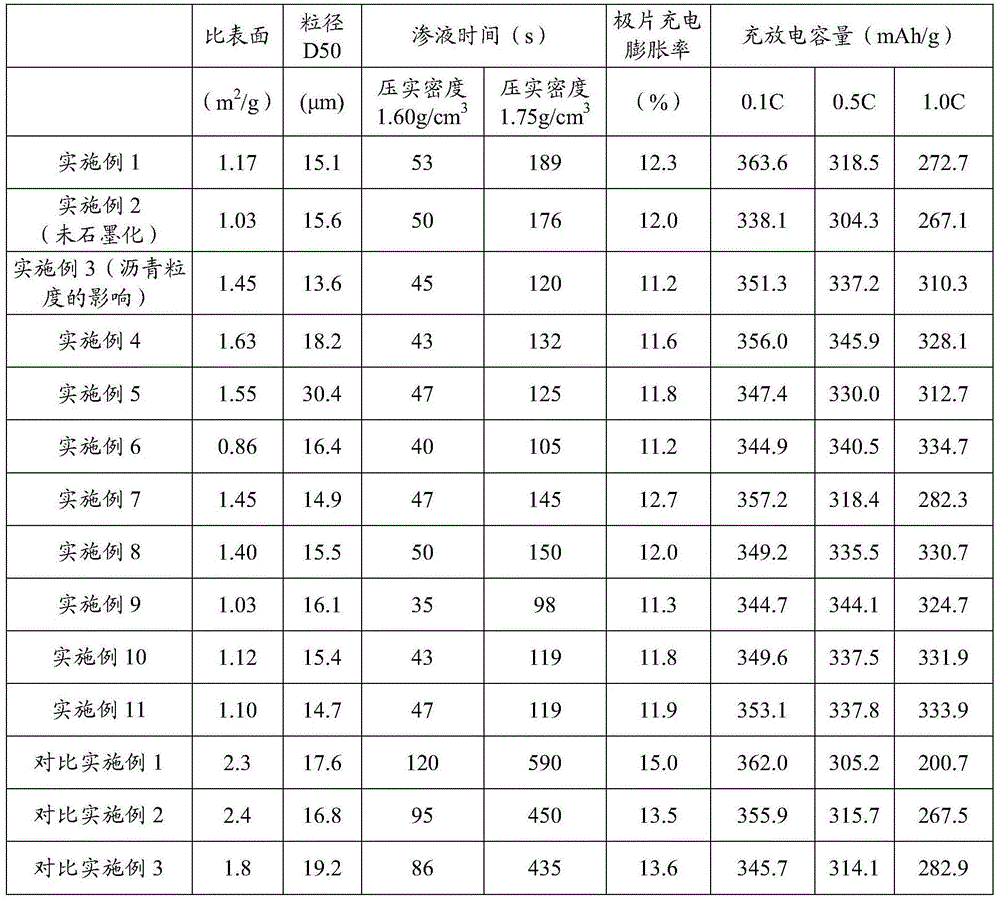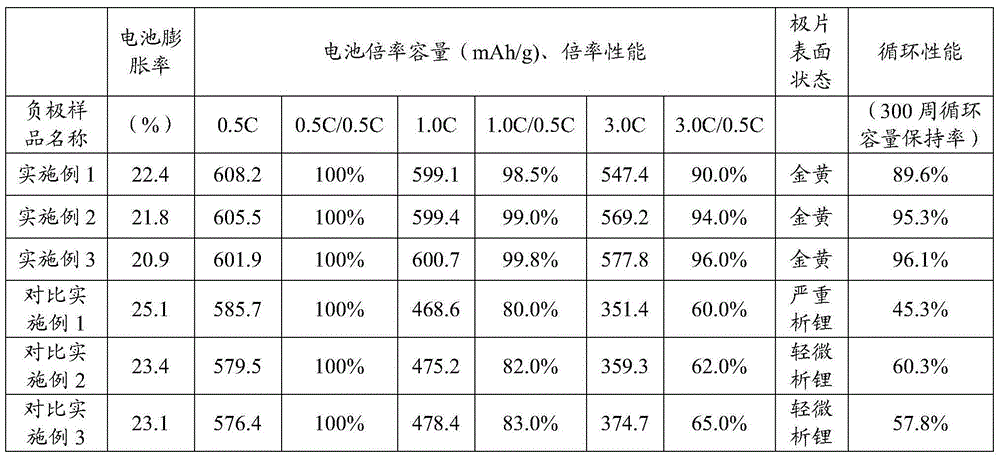Cell anode material and preparation method thereof
A battery negative electrode and manufacturing method technology, applied to battery electrodes, secondary batteries, circuits, etc., can solve problems such as deteriorating cycle performance, low yield, and damage to the coating layer
- Summary
- Abstract
- Description
- Claims
- Application Information
AI Technical Summary
Problems solved by technology
Method used
Image
Examples
preparation example Construction
[0046] The preparation method of pole piece used in the present invention is: in carboxymethyl cellulose (CMC) aqueous solution, add super conductive carbon black SP, stir; Add graphite sample, stir; Add styrene-butadiene rubber (SBR), stir; On the coating machine, the slurry is evenly coated on the copper foil to make pole pieces, and the density of one side is controlled at 8-9mg / cm 2 Left and right, the double-sided density is controlled at 16-18mg / cm 2 about. Proportion: Graphite: CMC: SP: SBR: H 2 O=96.5:1:1:1.5:110.
[0047] The test method of the button battery is as follows: put the pole piece coated on one side into a vacuum drying oven at a temperature of 110°C for 12 hours in a vacuum, take out the pole piece and roll it on a roller press, and set it aside. The battery was assembled in a German Braun glove box filled with argon, the electrolyte was 1MLiPF6EC:DEC:DMC=1:1:1 (volume ratio), and the metal lithium sheet was used as the counter electrode. Battery mode...
Embodiment 1
[0049] 1) Premixing: Mix natural graphite fine powder with an average particle size D50=8.6 μm and coal-based high-temperature asphalt with an average particle size D50=2.5 μm in a mass ratio of 4:1;
[0050] 2) Reaction: introduce the above mixture into a pressure-resistant heating reaction vessel that can be completely sealed and has a stirring function, start the stirrer, and feed N 2 Replace the air in the reaction vessel for 1 hour; seal the reaction vessel, raise the temperature to 450°C at a rate of 10°C / min, and keep it warm for 4 hours; raise the temperature to 580°C at a rate of 1°C / min, and keep it warm for 2 hours. During the process, the gas generated by the reaction is properly discharged, so that the pressure in the container is controlled at about 0.2 MPa.
[0051] 3) Release the reacted material to vacuum or fill it with N 2 in a container, let cool.
[0052] 4) Under the protection of inert gas, heat treatment at 1100°C for carbonization.
[0053] 5) Gra...
Embodiment 2
[0056] 1) Premixing: Mix natural graphite powder with average particle size D50=8.6μm and coal-based low-temperature pitch with average particle size D50=3.0μm in a mass ratio of 4:1;
[0057] 2) Reaction: introduce the above mixture into a pressure-resistant heating reaction vessel that can be completely sealed and has a stirring function, start the stirrer, and pass Ar to replace the air in the reaction vessel for 1 hour; seal the reaction vessel, and heat up at 10°C / min Increase the speed to 500°C and keep it warm for 4 hours; increase the temperature to 600°C at a rate of 1°C / min and keep it warm for 2 hours. During the process, the gas generated by the reaction is properly discharged, so that the pressure in the container is controlled at about 0.25 MPa.
[0058] 3) Emit the reacted material to a container that is evacuated or filled with Ar, and cooled.
[0059] 4) Under the protection of inert gas, conduct heat treatment at 1200°C for carbonization.
[0060] 5) Sievin...
PUM
| Property | Measurement | Unit |
|---|---|---|
| particle diameter | aaaaa | aaaaa |
| particle diameter | aaaaa | aaaaa |
| particle diameter | aaaaa | aaaaa |
Abstract
Description
Claims
Application Information
 Login to View More
Login to View More - R&D
- Intellectual Property
- Life Sciences
- Materials
- Tech Scout
- Unparalleled Data Quality
- Higher Quality Content
- 60% Fewer Hallucinations
Browse by: Latest US Patents, China's latest patents, Technical Efficacy Thesaurus, Application Domain, Technology Topic, Popular Technical Reports.
© 2025 PatSnap. All rights reserved.Legal|Privacy policy|Modern Slavery Act Transparency Statement|Sitemap|About US| Contact US: help@patsnap.com



